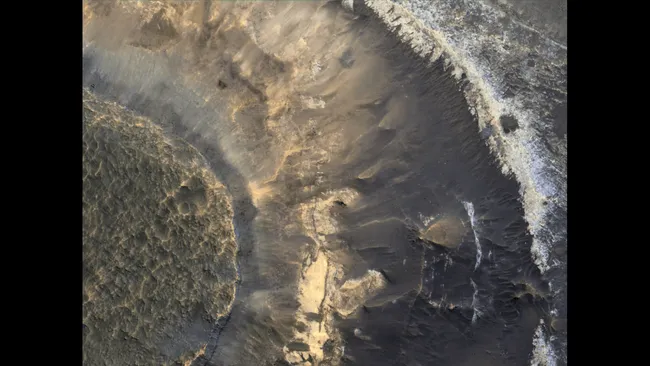Thick, mineral-rich layers of clay scattered across Mars could hold hidden signs of ancient life, according to a new study published in Nature Astronomy on June 16. These dense clay deposits—some stretching hundreds of feet—may have formed under long-lasting, stable, and habitable conditions roughly 3.7 billion years ago, offering a glimpse into a warmer, wetter era of the Red Planet.
Clays require liquid water to form, making their presence on Mars especially intriguing to scientists. “These areas have a lot of water but not a lot of topographic uplift, so they’re very stable,” said Rhianna Moore, the study’s co-author and planetary geologist. “If you have stable terrain, you’re not messing up your potentially habitable environments.”
The research, conducted using high-resolution data from NASA’s Mars Reconnaissance Orbiter, examined 150 clay-rich regions, focusing on their shapes, topography, and proximity to ancient lakes or rivers.
Stable, Wet, and Sheltered: A Recipe for Life?
On Earth, thick clay deposits are most often found in humid regions with minimal erosion—places where new weathering products aren’t washed away. The Martian data mirrors this pattern. Most of the clay areas are located in low-lying terrain near ancient lake beds, but not close to valleys where intense water flow would have stripped the surface.
These findings suggest the clay deposits were shaped primarily by chemical weathering, with little disruption from physical forces—an environment that could have supported and preserved microbial life.
A Climate Feedback Puzzle
Interestingly, the research also touches on a Martian climate mystery. While Earth has tectonic activity that constantly exposes new rock to form carbonates and regulate CO₂, Mars lacks such activity. That means the CO₂ released by ancient Martian volcanoes may have lingered in the atmosphere far longer—trapping heat and maintaining the planet’s warmer conditions.
Moore and her team propose that clay minerals may have played a surprising role here too. By absorbing water and trapping charged particles (cations), these clays might have inhibited the formation of carbonates, helping explain why Mars has far fewer carbonates than expected.
“[The clay is] probably one of many factors that’s contributing to this weird lack of predicted carbonates on Mars,” Moore said.
What This Means for Life on Mars
If these clay deposits did protect delicate chemical signatures—or even microbial life—their preservation could be key targets for future Mars missions. Unlike areas eroded by fast-moving water, these stable zones may still contain trapped organic molecules or biosignatures waiting to be uncovered.
For astrobiologists and planetary scientists, this is a strong reminder that Mars still holds many secrets beneath its dusty surface—and clay may be the quiet custodian of its ancient history.







